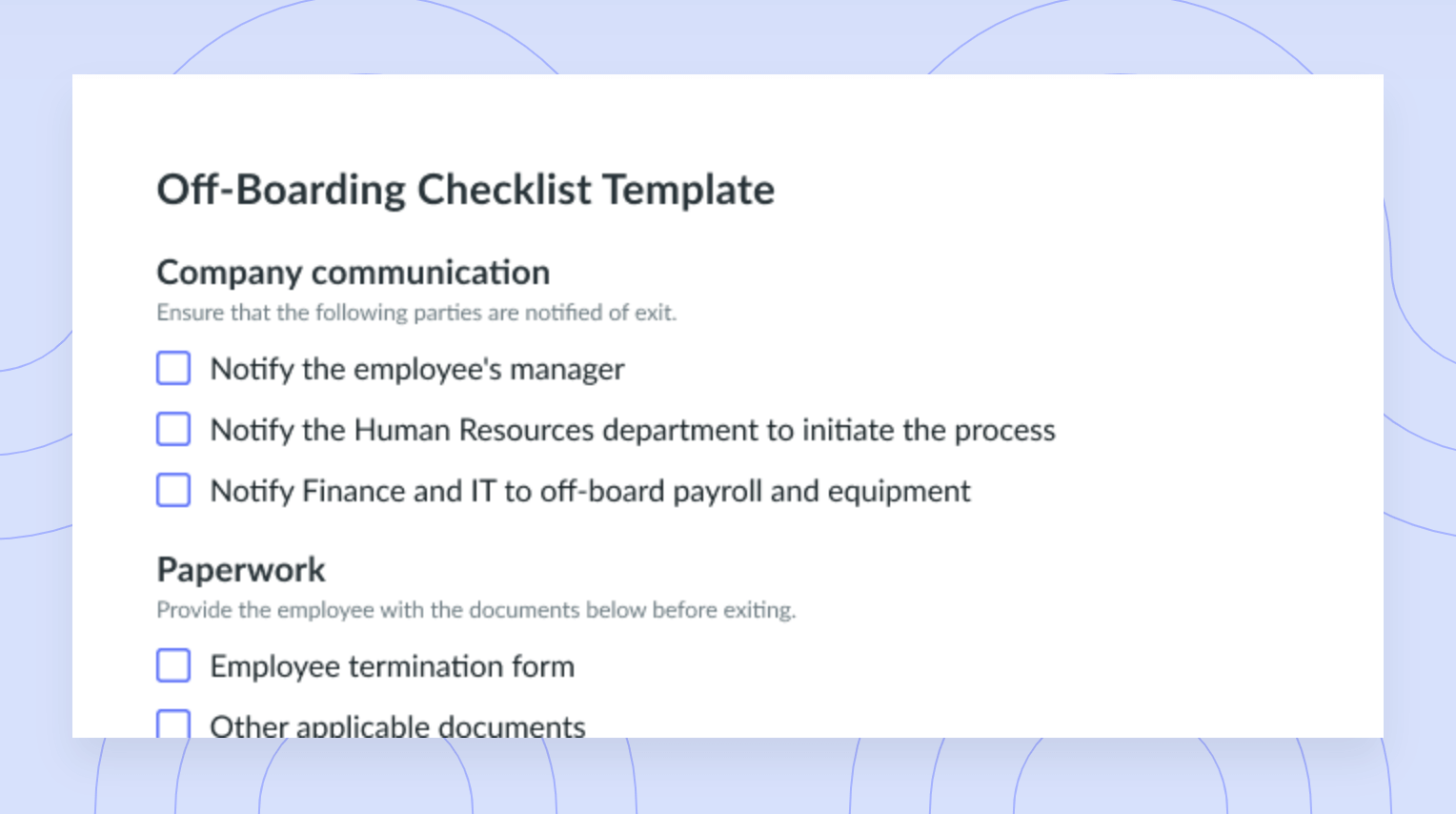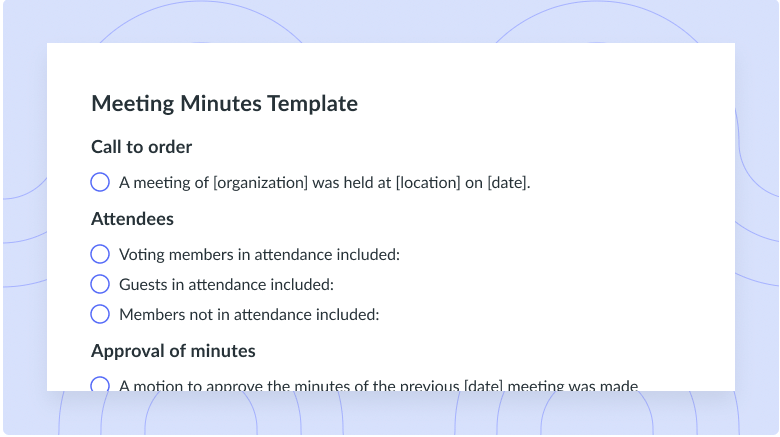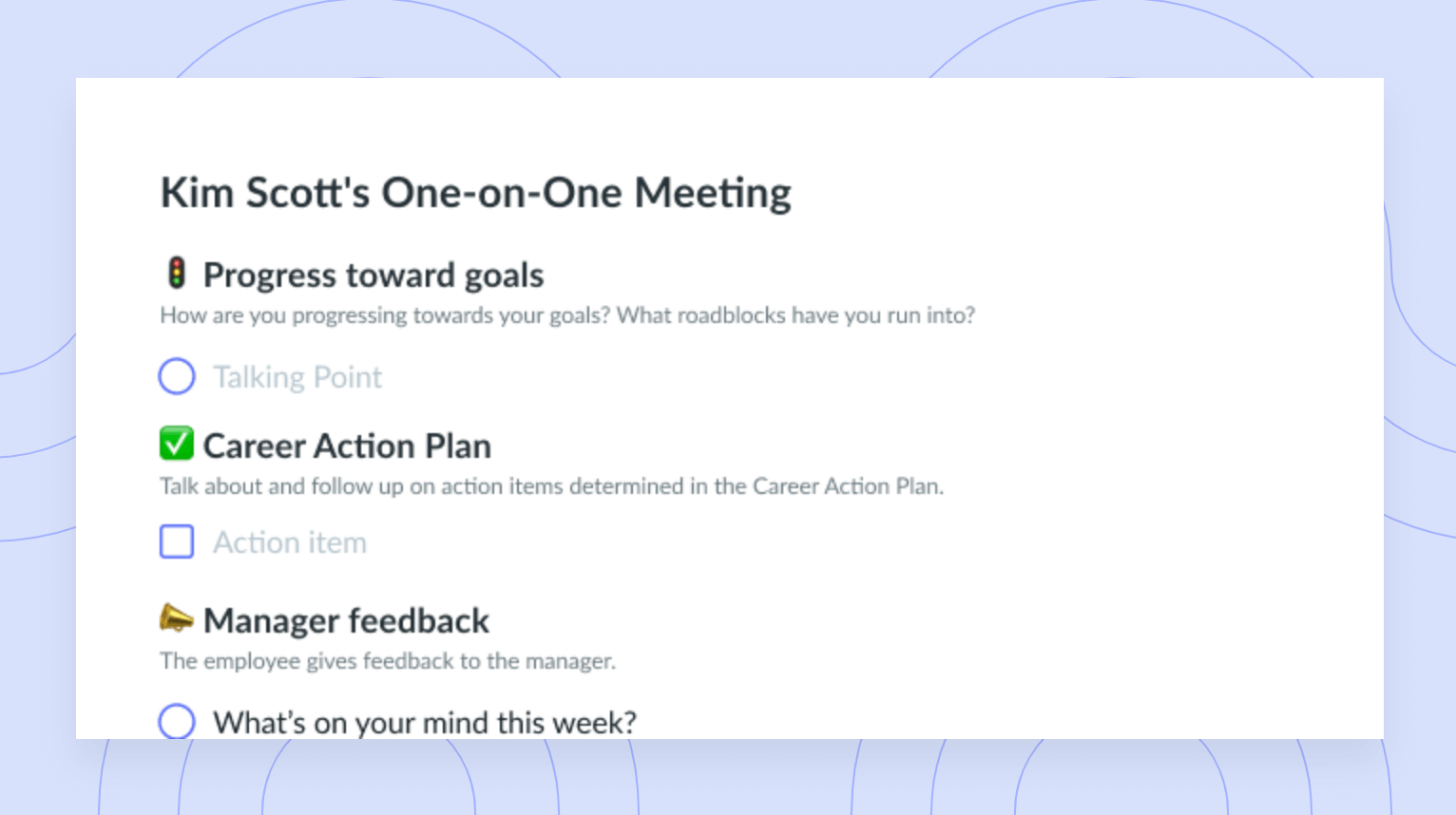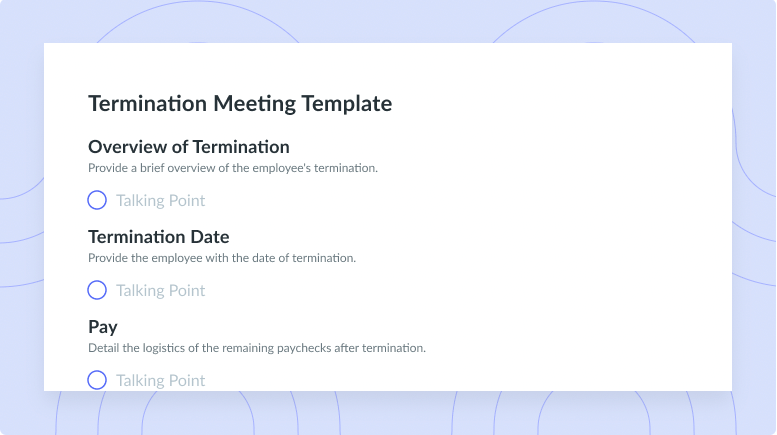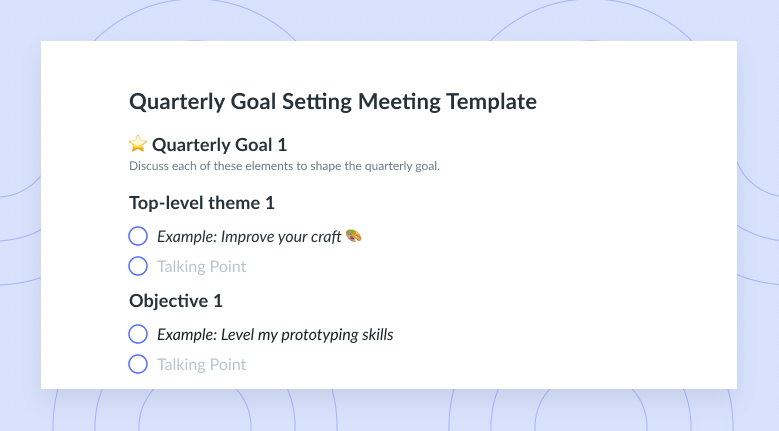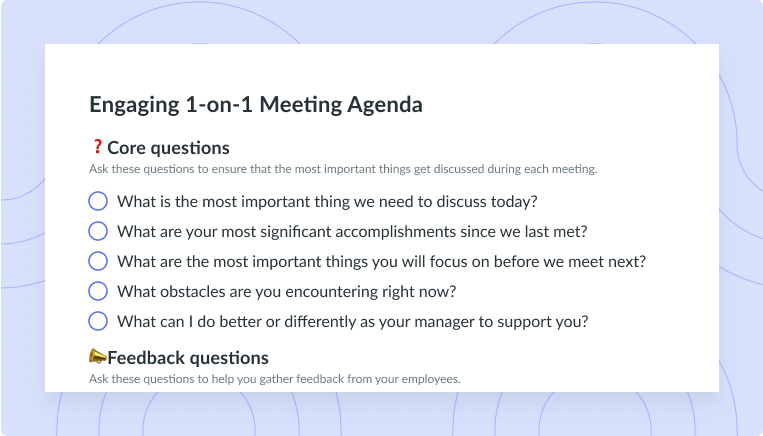Employee Termination: A Manager’s Guide to Getting it Right
You’re frustrated that your employee is underperforming, but you’re on the fence about firing them. Should you, or shouldn’t you? How do you know for sure?
One of the most challenging things you will ever do as a Manager is fire one of your employees. Lamenting about what to do and when to do it can be emotionally draining and stressful. Most Managers who are faced with firing an employee have reported sleepless nights, uneasy stomachs, and a general sense of anxiety and stress in the lead up to their employee’s dismissal. It’s not an easy task – but then again, being the boss isn’t easy either.
Fellow is here to guide you in making this tough decision as informed and seamless as possible! Read on to ensure you have taken the best approach when considering employee termination.
Consider this
One of the questions I get occasionally from clients is: “What steps do I follow to properly terminate an underperforming employee?” And my response usually is, “Back up a bit. Does the employee know they are underperforming? Because, let’s be honest, if the answer is ‘no,’ or ‘I’m not sure,’ then you have been underperforming too!”
A 2018 study published in Forbes, surveyed 1,050 people who had recently been fired from their jobs. Shockingly, 75% of those terminated reported that their Manager never met with them to discuss any concerns before firing them, and 59% said they had not received a recent performance review.
Have you done everything you can?
While many may believe that terminating an underperformer is one of the most difficult aspects of being a Manager, I would argue that ensuring you are being a fair and good boss to an underperformer is far more challenging, and often an overlooked part of the job. Remember: your job as a Manager is to mentor, coach, and help your employees be amazing individual contributors and team members – when they’re doing great, and also when they’re struggling.
So, if you’re one of the Managers out there who has an underperforming employee and you’re either considering letting them go, or you’re on the fence about it, take a deep breath, reflect, and make sure you follow these steps before making any decisions:
1 Double down on 1:1s
Done properly, one-on-one meetings are times for employees to update their Managers, ask questions, receive feedback, and get answers to move their projects forward. While one-on-one meetings are known as “the employee’s meeting,” it can also be a time for Managers to motivate, inspire, and challenge an employee to make progress toward goals. Whatever you do in these meetings, make sure you are clear, honest, and that you give your employee your full attention. It’s also a good idea to take notes and meet often, particularly if your employee is struggling or underperforming.
2 Challenge directly and demonstrate you care
Taking a page out of Kim Scott’s book (who is one of my favourite authors in the management and leadership space), always make sure you give candid feedback to your underperformer, saying exactly what you mean without beating around the bush. As Kim Scott teaches, it is vital to challenge your employees directly while also demonstrating that you care compassionately about them. Being overly empathetic actually doesn’t help anyone improve and it serves to dilute the feedback given, potentially confusing the employee. As a boss, it’s not ok to keep feedback to yourself if it will help your employee grow and progress. Feedback needs to be given, regardless of how tough or awkward.
3 Revisit your employee’s performance plan and conduct a review
It’s not enough to have a general gut feeling that your employee is underperforming. Rather it is vital to confirm this feeling with evidence by examining the employee’s performance plan, recent reviews, and perhaps even conducting a new review. Telling an employee that they are underperforming without referring to documentation or a list of agreed-upon expectations or goals is unfair and unkind. Employees should always know where they stand and performance conversations should never come as a surprise.
4 Consider a Performance Improvement Plan (PIP)
While it sounds disciplinary in nature, a performance improvement plan can indeed help your employee get back on track at work. PIPs – which can also be more positively framed as “Performance Action Plans” – are designed to clearly document current performance issues while also outlining new goals and steps for improvement, within a specified period of time. Employees who are on PIPs may indeed feel under pressure to perform or have a certain level of stress about being fired. Remember, if you develop a PIP with your employee, you must be committed to helping them succeed. This is your opportunity to put in the extra work as the extraordinary Manager that you are by coaching, mentoring, and guiding your employee through to their new goals, and hopefully to success.
5 Look for a skills mismatch
Sometimes an employee is underperforming because they are experiencing what is known as a skills mismatch. For example, perhaps they excelled at the job they used to have, so well in fact that they got promoted, but they are now struggling in their new job. As a Manager, knowing your employees well, including their strengths and weaknesses, is key. Ask yourself: Is the employee truly underperforming, or are they struggling with the skills and tasks for this particular position? If possible, consider moving them or changing up their day-to-day tasks to better align with their skillset.
6 Document, document, document
Whether you’re taking notes in a one-on-one, providing specific feedback, or having performance-related conversations, it is a best practice to document your conversation and keep your notes in the employee’s file – particularly for underperformers. If you do end up needing to terminate the employee, you have the documentation to do so, and if the employee’s performance improves, you also have documentation to assist you in developing their next performance review.

Pro tip
Using a meeting management tool like Fellow lets you document all your meeting notes, feedback and career conversations all in one place!

7 Seek input and advice
All managers struggle with certain biases, including performance bias. It’s a good idea to seek out the input of your own boss or a trusted peer, advisor or mentor. Obtaining the advice of another professional might help you see things more clearly, or confirm your thinking and direction.
Once you’ve tried everything, parting ways may be the only option
If, and only if, you have tried all of these options without success, it may indeed be time to offboard your employee. But if you’re not sure what to do next, don’t worry because you’re certainly not alone. A 2011 study found that 58% of Managers did not receive any management training, which means close to two-thirds of Managers have never been taught how to properly fire someone. Shocking, I know!
Now without going into details about jurisdictions and legislations for various countries, provinces, and states, let’s cover the high points that always apply:
1 Involve HR always
Employment laws can change often, and while it’s part of your job as a Manager to understand these, you may not always be able to keep on top of all the tiny details – which is why we have human resources professionals! Your HR department (or a freelance HR advisor or HR firm) can assist you with paperwork and ensure that the employee’s dismissal is legal in nature. If you work in a small company without an HR department or the ability to hire a professional advisor, there are often local governmental services you can access for free to help answer your questions.
2 Have a witness
It is a best practice to have one additional person with you when you meet with your employee to terminate their employment. This person acts as a witness to what was said in the room in case a complaint is ever filed with the labour board or other legal action is taken by the employee.
3 Be concise and clear
During tough conversations, particularly those that are marked with periods of silence or even tears, it is natural to want to fill the silence or awkwardness by talking more and more. Do not do this – you run the risk of accidentally saying something that might get you into hot water legally or giving the employee false hope that they could still get their job back. Keep your conversation short and be clear with the employee about their dismissal.
4 Inform your employees
Once you have completed the employee dismissal meeting and allowed the employee to collect their things and leave in a dignified manner (provided company security is not an issue), it is vital that you inform your employees (and perhaps your clients) that the employee is no longer with the company.
Parting advice
In closing, if I could offer one piece of parting advice it would be this: If you followed the steps above, trust that you did everything in your power to make it work. Don’t hold onto the stress, anxiety, and disappointment that comes with letting an employee go. You did your best – move on and continue to focus your efforts on helping your other employees be the very best they can be.









